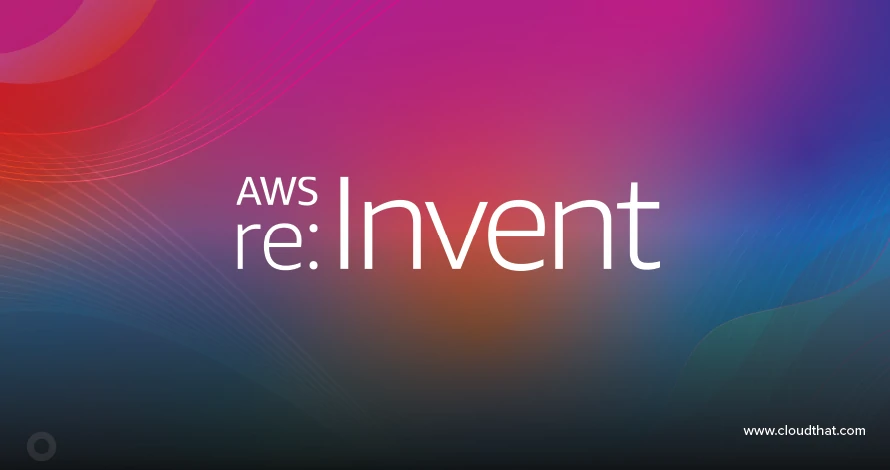|
Voiced by Amazon Polly |
Introduction
As artificial intelligence continues to evolve, the complexity of problems we aim to solve has grown exponentially. Single AI agents, while powerful, often face limitations when dealing with multifaceted challenges that require diverse expertise, parallel processing, and coordinated decision-making. This is where multi-agent orchestration becomes crucial.
Multi-agent orchestration involves coordinating multiple AI agents, each with specialized capabilities, to collaborate on solving complex tasks. Rather than relying on a monolithic AI system, organizations can build ecosystems of agents that collaborate, delegate responsibilities, and aggregate results to achieve outcomes that would be impossible for individual agents.
AWS provides an ecosystem for building multi-agent systems through services like Amazon Bedrock, AWS Lambda, Amazon SageMaker, and AWS Step Functions. However, the challenge lies not just in technology, but in understanding the architectural patterns that make multi-agent systems effective, maintainable, and scalable.
Pioneers in Cloud Consulting & Migration Services
- Reduced infrastructural costs
- Accelerated application deployment
Key Orchestration Patterns
Sequential Chaining Pattern
Agents execute tasks in a predefined order, where each agent’s output becomes the input for the next. This pattern is ideal for document processing pipelines and data transformation sequences. AWS Implementation uses AWS Step Functions for workflow orchestration and AWS Lambda functions as agent wrappers.
Parallel Execution Pattern
Multiple agents execute simultaneously on different aspects of a problem, and their results are aggregated. This maximizes throughput and reduces processing time for sentiment analysis across data sources or multi-perspective analysis. AWS Implementation leverages AWS Lambda concurrent executions and Amazon SQS for task distribution.
Hierarchical Orchestration Pattern
A supervisor agent coordinates multiple worker agents, making high-level decisions about task distribution and result synthesis. This provides centralized control while enabling specialized execution for enterprise automation and complex decision-making systems. AWS implementation utilizes Amazon Bedrock Agents as supervisors, paired with AWS Step Functions for hierarchical management.
Dynamic Routing Pattern
Agents are selected and invoked based on runtime conditions, input characteristics, or intermediate results. This enables adaptive workflows for customer support routing and intelligent query handling. AWS Implementation uses AWS Lambda with conditional logic and Amazon EventBridge rules.
Collaborative Consensus Pattern
Multiple agents independently analyze a problem, and their outputs are compared, voted on, or merged to reach a consensus. This improves accuracy for fraud detection and high-stakes decision support. AWS Implementation uses AWS Lambda for parallel execution and Amazon DynamoDB for result aggregation.
Event-Driven Pattern
Agents respond to events asynchronously, enabling reactive systems where agents trigger each other based on changes in their states. This is ideal for real-time monitoring and IoT processing. AWS Implementation leverages Amazon EventBridge and Amazon SNS/Amazon SQS for message passing.
Benefits of Multi-Agent Orchestration
Scalability and Performance
Multi-agent systems can scale horizontally by adding more specialized agents. Parallel execution patterns enable efficient processing of large workloads, allowing different agents to be scaled independently based on demand.
Modularity and Maintainability
Each agent focuses on a specific capability, making the system easier to understand, test, and maintain. Agents can be updated or replaced without affecting the entire system.
Fault Tolerance and Resilience
If one agent fails, others can continue operating. Redundant agents provide backup capabilities, and the system can gracefully degrade rather than completely fail.
Specialization and Expertise
Different agents can use different models optimized for specific tasks. Domain-specific agents utilize specialized knowledge bases, effectively combining multiple AI capabilities.
Cost Optimization
Resources are allocated only to agents that need them. Different agents can utilize appropriate model sizes, and parallel execution can reduce overall processing time and costs.
Use Cases of Multi-Agent Orchestration
Intelligent Document Processing
A system uses specialized agents for extraction, classification, validation, and summarization. A supervisor agent coordinates the workflow and handles any exceptions that may arise.
Customer Service Automation
Multiple agents handle intent classification, knowledge retrieval, response generation, sentiment monitoring, and quality assurance before delivery.
Enterprise Business Intelligence
Agents collect data from various sources, perform analysis and pattern detection, forecast trends, generate dashboards, and flag unusual patterns.
Software Development Assistance
Agents analyze pull requests, generate test cases, create documentation, suggest improvements, and coordinate tasks.
Healthcare Decision Support
Clinical systems employ agents for diagnosis analysis, treatment recommendations, drug interaction checks, evidence retrieval, and risk assessment.
Getting Started with Multi-Agent Orchestration
Developers can build multi-agent systems using AWS services with clear patterns.
Sequential Chain with AWS Step Functions:
|
1 2 3 4 5 6 7 8 9 10 |
import boto3 import json def agent_one(event, context): input_data = event['input'] result = {"stage": "one", "data": f"Processed: {input_data}"} return result def agent_two(event, context): previous_result = event['previous'] result = {"stage": "two", "data": f"Enhanced: {previous_result['data']}"} return result |
Parallel Execution:
|
1 2 3 4 5 6 7 8 9 10 11 12 13 14 |
import boto3 from concurrent.futures import ThreadPoolExecutor lambda_client = boto3.client('lambda') def invoke_agent(agent_name, payload): response = lambda_client.invoke( FunctionName=agent_name, Payload=json.dumps(payload) ) return json.loads(response['Payload'].read()) def parallel_orchestrator(input_data): agents = ['AnalysisAgent', 'SentimentAgent', 'SummaryAgent'] with ThreadPoolExecutor() as executor: results = list(executor.map(lambda a: invoke_agent(a, input_data), agents)) return results |
Technical Challenges and Optimizations
Latency Management
Multi-agent systems can introduce latency through network calls. Optimize by implementing parallel execution, using AWS Lambda Provisioned Concurrency, caching results in Amazon ElastiCache, and implementing timeout strategies.
State Management
Use Amazon DynamoDB for distributed state with conditional writes, implement idempotent operations, leverage AWS Step Functions for built-in state management, and design stateless agents.
Error Handling
Implement exponential backoff for transient failures, use dead-letter queues, design compensating transactions, and implement circuit breakers to prevent cascade failures.
Cost Control
Right-size AWS Lambda memory, use appropriate Amazon Bedrock model tiers, implement request batching, and monitor with AWS Cost Explorer.
Observability
Implement distributed tracing with AWS X-Ray, use Amazon CloudWatch Logs Insights, create custom metrics for agent performance, and build orchestration flow dashboards.
Conclusion
Multi-agent orchestration represents a fundamental shift in how we approach complex AI problems. Rather than building monolithic systems, we can create ecosystems of specialized agents that collaborate intelligently to achieve sophisticated outcomes.
As organizations scale their AI initiatives, the ability to build modular, maintainable, and observable multi-agent systems becomes critical. These systems offer technical benefits, such as scalability and fault tolerance, as well as business advantages through specialization, cost optimization, and transparency. The future of enterprise AI lies in intelligent orchestration, and AWS provides the foundation for next-generation AI applications.
Drop a query if you have any questions regarding Multi-agent orchestration and we will get back to you quickly.
Empowering organizations to become ‘data driven’ enterprises with our Cloud experts.
- Reduced infrastructure costs
- Timely data-driven decisions
About CloudThat
CloudThat is an award-winning company and the first in India to offer cloud training and consulting services worldwide. As a Microsoft Solutions Partner, AWS Advanced Tier Training Partner, and Google Cloud Platform Partner, CloudThat has empowered over 850,000 professionals through 600+ cloud certifications winning global recognition for its training excellence including 20 MCT Trainers in Microsoft’s Global Top 100 and an impressive 12 awards in the last 8 years. CloudThat specializes in Cloud Migration, Data Platforms, DevOps, IoT, and cutting-edge technologies like Gen AI & AI/ML. It has delivered over 500 consulting projects for 250+ organizations in 30+ countries as it continues to empower professionals and enterprises to thrive in the digital-first world.
FAQs
1. When should I use multi-agent systems?
ANS: – Use multi-agent systems when tasks require diverse expertise, parallel processing can improve performance, you need fault tolerance, or different workflow parts have different scaling requirements.
2. What AWS services are best for orchestration?
ANS: – Key services include AWS Step Functions, AWS Lambda, Amazon Bedrock, Amazon EventBridge, Amazon SQS/Amazon SNS, and Amazon DynamoDB for comprehensive multi-agent coordination.
3. How do I handle failures?
ANS: – Implement retry logic, use dead-letter queues, design compensating transactions, implement circuit breakers, and ensure degraded functionality.

WRITTEN BY Ahmad Wani
Ahmad works as a Research Associate in the Data and AIoT Department at CloudThat. He specializes in Generative AI, Machine Learning, and Deep Learning, with hands-on experience in building intelligent solutions that leverage advanced AI technologies. Alongside his AI expertise, Ahmad also has a solid understanding of front-end development, working with technologies such as React.js, HTML, and CSS to create seamless and interactive user experiences. In his free time, Ahmad enjoys exploring emerging technologies, playing football, and continuously learning to expand his expertise.


 Login
Login


 October 22, 2025
October 22, 2025 PREV
PREV










Comments